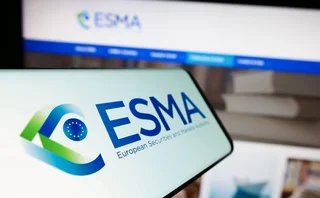
Web malware spreads 35%, says security survey
April witnessed a 35% proliferation of internet malware attacks, hitting the biggest sites and the web’s vast “long tail” of smaller websites, according to research by security firm Scansafe
LONDON – Web-based threats from malware - software that is designed to infiltrate or damage computer systems - are “growing exponentially”, with a 35% rise in April alone, according to monthly research by web security firm Scansafe. More than 500,000 high-profile sites such as the United Nations’ website have had their databases targeted by the latest wave of a so-called ‘SQL injection’. Meanwhile an ‘iframe injection’ is misdirecting search queries to malware downloads on a multitude of middle-tier sites that, although relatively small individually, together constitute the ‘long tail’ of the internet.
Searches made on infected sites using popular consumer security software such as McAfee SiteAdvisor failed to flag or block the sites. The research is based on billions of web requests Scansafe logs on behalf of business customers worldwide. The inability of consumer software to deflect such malware attacks is a growing threat both inside and outside the office – as more roaming employees compromise security accessing sensitive corporate material simultaneous to leisure sites.
“It is unlikely we have seen the last of either of these attacks. Given the improved targeting and growing number of compromises, web surfers will want to be increasingly cautious,” says Mary Landesman, a senior security researcher at Scansafe.
Only users who have a paid subscription or are part of a corporate subscription are able to print or copy content.
To access these options, along with all other subscription benefits, please contact info@risk.net or view our subscription options here: http://subscriptions.risk.net/subscribe
You are currently unable to print this content. Please contact info@risk.net to find out more.
You are currently unable to copy this content. Please contact info@risk.net to find out more.
Copyright Infopro Digital Limited. All rights reserved.
As outlined in our terms and conditions, https://www.infopro-digital.com/terms-and-conditions/subscriptions/ (point 2.4), printing is limited to a single copy.
If you would like to purchase additional rights please email info@risk.net
Copyright Infopro Digital Limited. All rights reserved.
You may share this content using our article tools. As outlined in our terms and conditions, https://www.infopro-digital.com/terms-and-conditions/subscriptions/ (clause 2.4), an Authorised User may only make one copy of the materials for their own personal use. You must also comply with the restrictions in clause 2.5.
If you would like to purchase additional rights please email info@risk.net
More on Regulation
Will Iosco’s guidance solve pre-hedging puzzle?
Buy-siders doubt consent requirement will remove long-standing concerns
Responsible AI is about payoffs as much as principles
How one firm cut loan processing times and improved fraud detection without compromising on governance
Could one-off loan losses at US regional banks become systemic?
Investors bet Zions, Western Alliance are isolated problems, but credit risk managers are nervous
SEC poised to approve expansion of CME-FICC cross-margining
Agency’s new division heads moving swiftly on applications related to US Treasury clearing
ECB bank supervisors want top-down stress test that bites
Proposal would simplify capital structure with something similar to US stress capital buffer
Clearing houses warn Esma margin rules will stifle innovation
Changes in model confidence levels could still trip supervisory threshold even after relaxation in final RTS
BlackRock, Citadel Securities, Nasdaq mull tokenised equities’ impact on regulations
An SEC panel recently debated the ramifications of a future with tokenised equities
CCPs trade blows over EU’s new open access push
Cboe Clear wants more interoperability; Euronext says ‘not with us’







